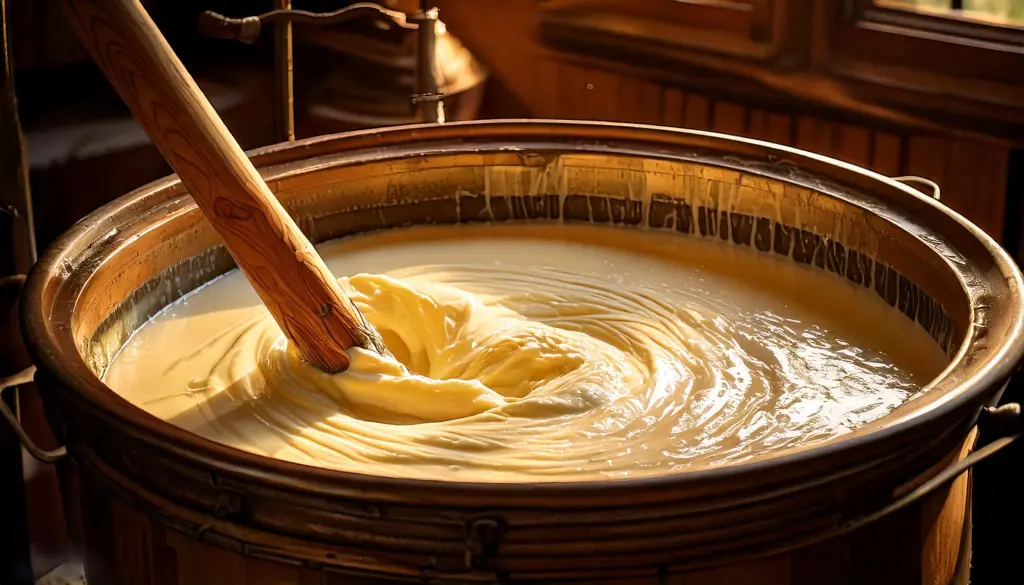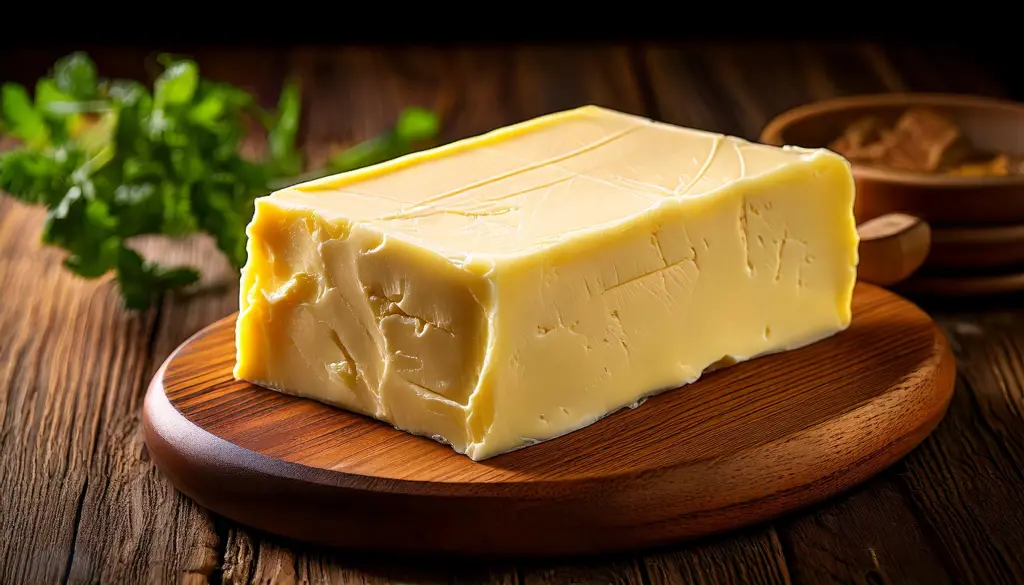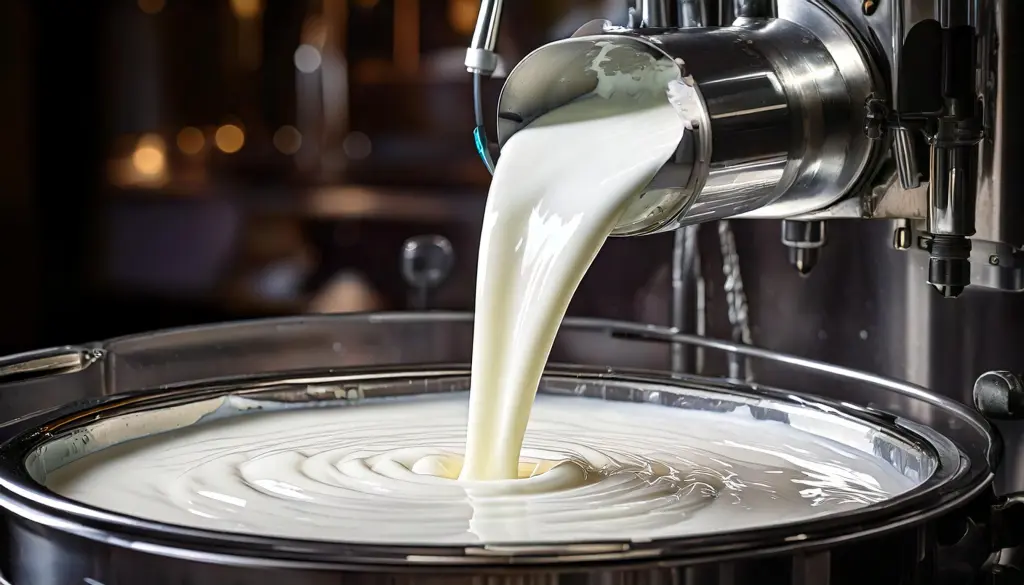Butter plays an irreplaceable role in cooking, baking, and everyday meals. Among its many forms, it stands out for its creamy texture, delicate flavor, and versatility in the kitchen. But what exactly is it, and how does it differ from other types of butter? This article delves into the origins, production, uses, and comparisons of sweet cream butter. Whether you’re a cooking enthusiast or simply butter-curious, this guide has everything you need to know.
What is Sweet Cream Butter?
Sweet cream butter comes from fresh, pasteurized cream, unlike cultured or fermented cream. The name “sweet cream” reflects the fact that the cream hasn’t soured, giving the butter a “sweet,” clean flavor without any tanginess. This characteristic distinguishes it from cultured butter, which acquires a slightly tangy taste through fermentation.
In the United States and Canada, people often prefer sweet cream butter for its mild flavor, which works well in both savory dishes and sweet treats. Unlike European butter, which generally has a higher fat content, it offers a balanced flavor and smooth spreadability, suiting a wide range of culinary uses.
Why Is It Called “Sweet Cream” Butter?
The term “sweet cream” might seem misleading, as it doesn’t imply the butter is sugary. Instead, it refers to the fact that the cream used to make the butter hasn’t undergone fermentation or culturing before churning. In this process, producers separate fresh cream from milk, pasteurize it to remove bacteria, and then churn it to create butter.
Interestingly, the absence of fermentation not only affects the flavor but also influences the butter’s texture, making it velvety and smooth. This clean taste is one reason it’s a staple ingredient in everything from pancakes to sauces.
(Pro Tip: Want to learn more about how butter is categorized? Check out this detailed guide on butter types for a deeper dive.)
How is Sweet Cream Butter Made?
The Process of Making It
Sweet cream butter starts as fresh cream, a naturally rich and fatty component of milk. The production process is meticulous, designed to create a smooth and consistent product. Here’s a step-by-step look at how manufacturers craft this delightful butter:
• Cream Separation
Milk is collected and processed to separate the cream from the milk. Producers select this cream for its high butterfat content, ensuring a rich and creamy texture.
• Pasteurization
The cream undergoes pasteurization, a process that heats it to eliminate harmful bacteria while preserving its natural flavor. Pasteurization ensures the butter’s safety and extends its shelf life.
• Churning
The pasteurized cream enters large churns, where agitation causes the butterfat particles to clump together. This churning separates the solid butter from the liquid buttermilk.
• Washing and Kneading
Manufacturers wash the butter to remove residual buttermilk, which helps prevent spoilage. Then, they knead it to achieve a uniform texture and incorporate any desired salt. Unsalted varieties skip this step.
• Packaging
Once the butter reaches the desired consistency, workers mold and package it for sale. Whether wrapped in parchment paper or sealed in tubs, sweet cream butter is now ready for your kitchen!
What Makes it Unique?
The production process shapes the distinct characteristics of sweet cream butter. Because producers pasteurize the cream and do not culture it, the butter lacks the tangy, acidic notes typical of European or cultured varieties. This quality makes it ideal for recipes that require a neutral, creamy flavor.
(Curious about how butter-making evolved over time? Learn more about the traditional techniques in this comprehensive guide.)and comparisons!
Characteristics

Unique Qualities
Sweet cream butter boasts several standout traits that make it a popular choice among cooks and bakers. Here’s what sets it apart:
- Flavor Profile: With its mild and creamy taste, it is versatile. Unlike cultured butter, it doesn’t have tangy or acidic undertones, making it suitable for both savory dishes and desserts.
- Texture: Its smooth and spreadable consistency allows for easy application on bread or incorporation into recipes.
- Color: Depending on the cow’s diet, sweet cream butter can range from pale yellow to a deeper, golden hue.
Salted vs. Unsalted Sweet Cream Butter
A critical distinction in sweet cream butter is between its salted and unsalted versions:
- Salted Butter: Adds a touch of seasoning and is great for spreading on bread or finishing dishes. However, the added salt can affect recipes that require precise measurements.
- Unsalted Butter: Preferred for baking, as it gives more control over the dish’s flavor. It’s also a popular choice for making sauces or clarifying butter.
(For more insights into the difference between salted and unsalted butter, this cooking resource provides a detailed breakdown.)
Nutritional Information
Sweet cream butter is rich in fat, which contributes to its flavor and versatility. Here’s a snapshot of its typical nutritional composition per tablespoon (14g):
- Calories: ~100 kcal
- Total Fat: ~11g
- Saturated Fat: ~7g
- Cholesterol: ~30mg
- Vitamin A: ~8% of the daily value
How Sweet Cream Butter Compares to Other Butter Types
Sweet cream butter differs from other butter varieties like cultured butter, European-style butter, and whipped butter:
- Cultured Butter: Made from fermented cream, giving it a tangy flavor.
- European-Style Butter: Contains a higher fat content (82% or more), making it richer.
- Whipped Butter: Air is incorporated during production, resulting in a lighter texture but lower density.
Culinary Uses and Best Pairings of Sweet Cream Butter
Everyday Uses
Sweet cream butter is a kitchen staple for a good reason it’s incredibly versatile and enhances the flavor of countless dishes. Here’s how you can use it:
- Spreading: Its smooth, creamy texture makes it perfect for spreading on bread, bagels, or muffins.
- Cooking: Use it to sauté vegetables or sear proteins, where its mild flavor won’t overpower the dish.
- Baking: A must-have for cookies, cakes, and pastries, it creates tender, flaky textures thanks to its balanced fat content.
- Condiments: Blend it with herbs, garlic, or citrus zest for a homemade compound butter that elevates grilled meats or roasted vegetables.
Pairing with Ingredients
Sweet cream butter complements a variety of foods:
- Savory Dishes: Pair it with fresh herbs like rosemary or thyme to enhance roasted potatoes or spread it on freshly baked dinner rolls.
- Sweet Creations: Use it in frostings or buttercreams to achieve a silky, rich consistency, or melt it over pancakes for a breakfast treat.
- Grains and Pasta: A dollop of butter can transform plain rice, quinoa, or pasta into something indulgent.
(Curious about recipes that spotlight butter? This culinary guide is brimming with ideas.)
Best Practices for Cooking with
When cooking with sweet cream butter, follow these tips for the best results:
- Watch the Heat: Butter has a low smoke point (around 300°F/150°C), so avoid using it for high-heat frying.
- Use in Layers: Add it at different stages of cooking for nuanced flavors, such as melting it first for a sauce or finishing a dish with a pat of butter for extra richness.
- Room Temperature for Baking: For even mixing in dough or batter, allow butter to soften to room temperature before use.
Benefits of Sweet Cream Butter
Nutritional Benefits
Sweet cream butter, while indulgent, provides several nutrients when consumed in moderation:
- Vitamin A: Supports vision, skin health, and immune function. Butter is naturally rich in this fat-soluble vitamin.
- Essential Fats: Contains healthy saturated fats that are essential for energy and cell function.
- Short-Chain Fatty Acids: Sweet cream butter includes butyrate, which may support gut health and reduce inflammation.
- Cholesterol in Moderation: While butter has dietary cholesterol, recent studies suggest moderate intake may not significantly impact heart health for most individuals.
(For more insights into butter’s nutritional profile, this dietary guide provides further details.)
Benefits in Cooking
- Flavor Enhancer: Sweet cream butter’s mild, creamy taste adds richness to dishes without overpowering other ingredients.
- Perfect for Baking: It’s a vital component for creating fluffy cakes, flaky pastries, and moist cookies due to its high-fat content.
- Natural Ingredient: With no additives, sweet cream butter is a wholesome alternative to margarine or shortening in recipes.
- Versatility: Its ability to blend well with both savory and sweet ingredients makes it a kitchen essential.
Sweet Cream Butter in a Balanced Diet
While butter is calorie-dense, it can fit into a balanced diet when consumed thoughtfully:
- Portion Control: A tablespoon of butter can add flavor without excessive calorie intake.
- Pair with Nutrient-Dense Foods: Use butter alongside whole grains, lean proteins, and vegetables for a well-rounded meal.
- Moderation is Key: Focus on balance by incorporating butter sparingly in a diet rich in fruits, vegetables, and lean proteins.
(Discover more about incorporating butter into a healthy lifestyle with this balanced eating resource.)
Tips for Selecting, Storing, and Using

When choosing sweet cream butter, consider the following factors to ensure the best quality:
- Ingredient List: Look for brands that list only cream (and salt if salted butter) without additives or preservatives.
- Color and Freshness: Opt for butter with a natural yellow hue, indicating freshness and high-quality cream.
- Source and Type: Choose butter from grass-fed cows for a richer flavor and higher omega-3 content.
- Packaging: Butter wrapped in foil or opaque packaging maintains freshness by protecting it from light and air.
Proper Storage
Storing butter correctly preserves its flavor and texture:
- Refrigeration: Keep butter in the fridge at 35-40°F (1.6-4.4°C) to maintain its freshness.
- Freezing: For longer storage, freeze butter in its original packaging or airtight containers for up to six months.
- Counter Storage: Salted butter can be kept at room temperature in a covered dish for a few days, but unsalted butter should always be refrigerated.
Tips for Using
Get the most out of sweet cream butter with these usage tips:
- Soften Before Use: Bring butter to room temperature for smooth spreading or easy mixing into batters and doughs.
- Clarify It: To avoid burning, make clarified butter by removing milk solids ideal for high-heat cooking.
- Experiment with Flavors: Blend softened butter with herbs, spices, or sweeteners to create custom spreads.
(For more butter storage hacks, check out this butter storage guide.)
How It Is Made

The Butter-Making Process
Sweet cream butter undergoes a meticulous process that transforms cream into the creamy spread we all love. Here’s a breakdown:
- Cream Collection: High-quality cream is separated from fresh milk, ensuring it’s free from impurities.
- Pasteurization: The cream is heated to eliminate bacteria, ensuring safety and extending shelf life.
- Churning: The pasteurized cream is agitated, separating the butterfat from the buttermilk. The result is a rich, creamy butter mass.
- Washing and Kneading: The butter is rinsed to remove remaining buttermilk and kneaded to achieve the perfect texture.
- Shaping and Packaging: The butter is molded into blocks or sticks and packed for sale, ensuring it remains fresh and protected.
Differences Between Sweet Cream Butter and Other Types
Sweet cream butter stands out among its counterparts for several reasons:
- Sweet Cream Butter vs. Cultured Butter: Cultured butter is made from fermented cream, giving it a tangy flavor, while sweet cream butter is mild and creamy.
- Sweet Cream Butter vs. Clarified Butter: Clarified butter, like ghee, has milk solids removed, making it suitable for high-heat cooking. Sweet cream butter retains its milk solids, ideal for baking and spreading.
- Salted vs. Unsalted: Sweet cream butter can be salted or unsalted, catering to both savory dishes and precise baking recipes.
(Want to learn more about butter types? This butter variety guide explains it all!)
Artisan vs. Commercial
- Artisan Butter: Handcrafted in small batches, artisan butter often boasts a higher fat content and richer flavor.
- Commercial Butter: Mass-produced and readily available, commercial butter offers consistency and affordability but may lack the depth of flavor found in artisan varieties.
Frequently Asked Questions (FAQs)
What Is the Difference Between Sweet Cream Butter and Regular Butter?
Sweet cream butter is a type of regular butter made from fresh, pasteurized cream. It offers a mild flavor, unlike cultured butter, which uses fermented cream to develop a tangy taste. You can find it in both salted and unsalted varieties, making it suitable for many different culinary uses.
Is Sweet Cream Butter Healthy?
Sweet cream butter fits into a healthy diet when consumed in moderation. It provides essential fats, Vitamin A, and other nutrients that support energy levels and overall wellness. However, due to its high saturated fat content, it’s best to enjoy it as an occasional treat rather than a daily staple.
Can I Use Sweet Cream Butter for Baking?
Yes! it is ideal for baking because of its creamy texture and consistent fat content, which help create moist cakes, flaky pastries, and soft cookies. Unsalted sweet cream butter is preferred in baking to control the salt levels in recipes.
How Long Does Sweet Cream Butter Last?
When stored properly in the refrigerator, it can typically lasts up to 1-2 months. If frozen, it can be preserved for up to six months. Always check for off smells or discoloration as signs of spoilage.
Is Sweet Cream Butter the Same as Unsalted Butter?
Not always. Sweet cream butter refers to the type of cream used (fresh and pasteurized) rather than the presence or absence of salt. it can be either salted or unsalted, depending on the variety you choose.
Why Is Sweet Cream Butter More Expensive?
Sweet cream butter generally costs more due to its use of high-quality, fresh cream and the absence of added cultures or preservatives, which are common in other types of butter. Additionally, artisanal versions tend to be pricier because they are produced in small batches and often feature premium ingredients.
Conclusion: Embrace the Creamy Goodness
Sweet cream butter has earned its place as a kitchen staple thanks to its rich, creamy texture and versatility. Whether you spread it on toast, use it in baking, or make delicious sauces, this butter enhances the flavor of almost any dish. From its smooth creation process to its key role in crafting mouthwatering recipes, sweet cream butter is an essential addition to your pantry.
While it’s important to enjoy it in moderation due to its fat content, the benefits of its natural richness and flavor make it a worthwhile ingredient to include in your diet. Whether you choose unsalted or salted, artisan or commercial, sweet cream butter remains a favorite for both home cooks and professional chefs alike.
Now that you know all there is to learn about sweet cream butter from its production process to how you can select, store, and use it there’s no reason not to add a little extra indulgence to your meals. Why not give it a try in your next recipe and savor the buttery goodness that only sweet cream butter can provide?
